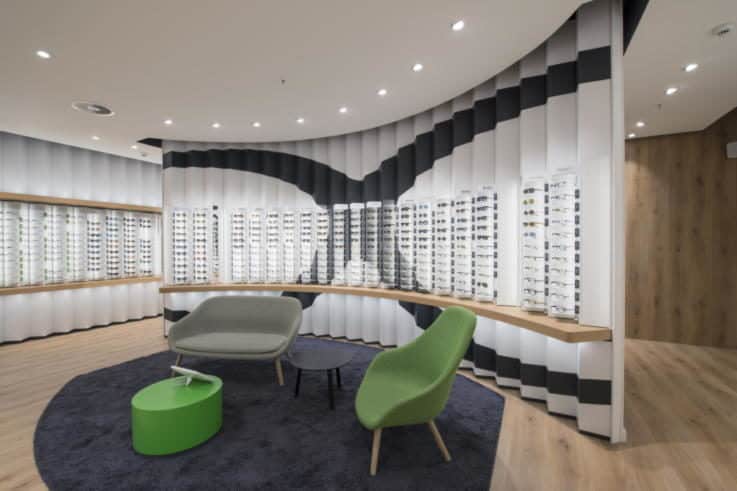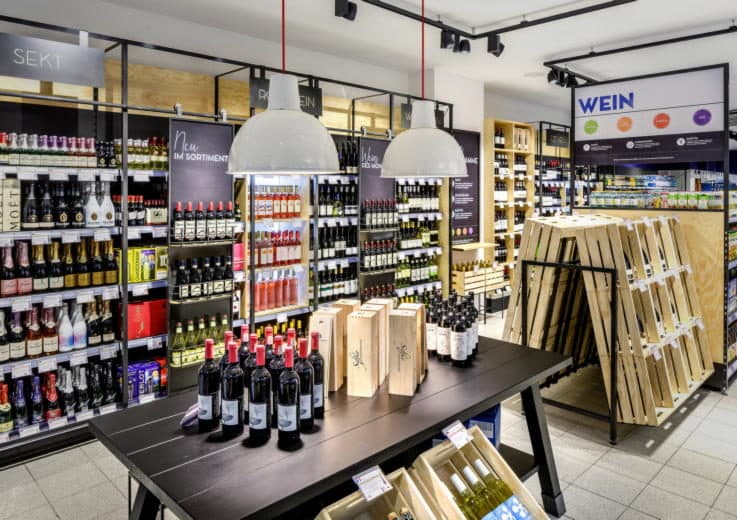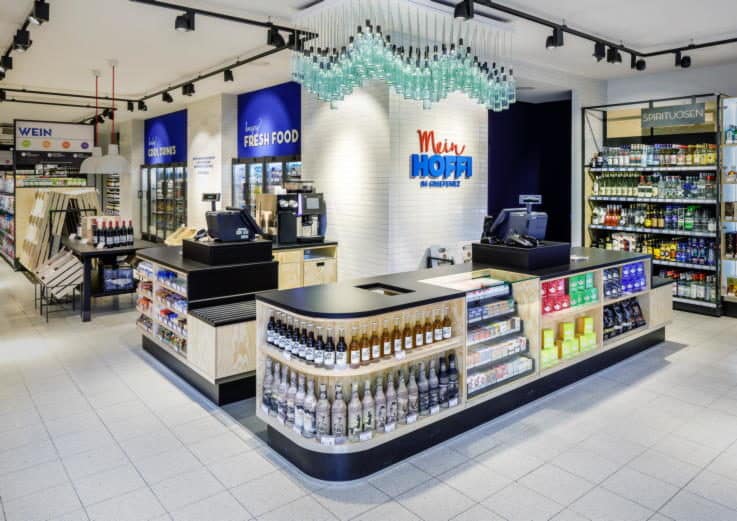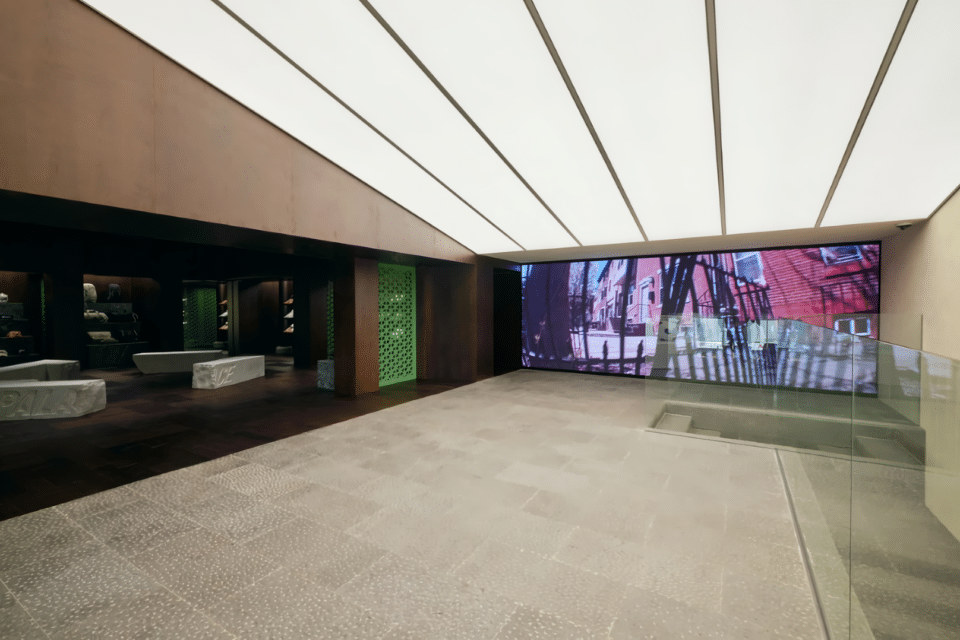dan pearlman shares the secrets to brand experience success


Here’s a little secret – there is no dan pearlman. At least not an individual by that name. What dan pearlman is is a collective, a group of agencies that specialise in branding and experience.
Based out of Berlin, the group works globally to help clients create holistic experiences that are emotional, relevant and economically successful across all touchpoints. Basically the kind of consistent brand experience that everyone should be offering.
Co-founder and CEO Nicole Srock.Stanley is the group’s resident retail expert, so we pinned her down to find out how brands can get experience right and what are the quick wins that retailers can really benefit from:
Could you describe dan pearlman in a nutshell?
We’re a strategic creative agency network. We have a streamlined design thinking process to come up with the best solutions for our clients and for the problems that they have at that given time. The output will always be a mixture of strategy and creativity. It can be a store or a relaunch of a brand or it can be an experience or it can be a strategy for internal branding or something else.
Usually we have clients who are already pretty aware that they have a complex situation or problem. They want to move into a different state, to be more innovative, to be faster, to be more agile or whatever it is, and we’ll help them. We use an integrated process of design thinking, analysis, experts and specialists to break down the issue and how to solve it.
We also have the more classic customer who wants to do a pitch with five agencies for their new store design. This is not something we do very often. There is relevance in redesigning a beautiful store, but mostly the world is much more complex than that. You have to tackle the service design, internal communications, digital signage, campaigning, assortment and everything else as well. We like those kinds of projects best because if we do it holistically then in the long run our clients have much more revenue compared to just doing a facelift on the retail side.

Can you tell us about one of your recent projects?
Fahrrad.de is an example of a digital pure player going into brick-and-mortar. This is something we like a lot at the moment, helping these companies to overcome the obstacles. One of the most exciting processes is to transfer digital identities and services into the physical space.
If you start with the infrastructure of a digital pure player you don’t necessarily understand the challenges of creating brick-and-mortar. For example, if there’s a special material you want then you might have to wait weeks for it to be delivered. In the digital world everything is always just a few clicks away. Or maybe you do an overnight shift of programming and then you have solved the problem. In the physical world there’s a very long list of logistics that are mostly hindering those fast agile processes. So, the two ways of thinking are not very synchronised. What we do is make them aware of what the process is.

We also look into the digital tools that our customers have like. Another client of ours is Mister Spex who has been a pure player in sunglasses and glasses for a long time. We looked at what kinds of services they offered online and then we transformed them into the physical world. It is very intricate work because there are so many rules, regulations and behavioural things to consider in the physical world.
In addition, the same customer in a physical world might react completely differently in the digital world. Vice versa, people in the digital world use tools completely differently in a physical world. You always have to find a different analogy to translate one service from digital into physical. We do a lot of prototyping, research and beta testing to find out what the same customers in a digital world would accept in the physical world. Then we bring the product into the physical world and synchronise the services behind it.
With Fahrrad.de we’ve done two stores and they already have a very good turnover. With Mister Spex it is now ten stores and they are actually doing extremely well. Because they have all the back-end perfectly synchronised and working like a machine, every customer that they get in the physical world they can potentially monetise in the digital world.
Why might it be cheaper to acquire a customer through the store rather than online?
What I believe is, that the store rent in the physical world is fixed but the rent you have to pay in a metaphorical sense to Google to get a new customer is limitless. Every time you bid on something that’s generic like sunglasses it can be one price or it can be a completely different one. You have much more stable costs when you’re in a physical world and the frequency of footfall in front of the shop window is not auctioned.

Are there other things that you help clients with beyond their stores?
Another client of ours is Getränke Hoffmann who were the first to open up cash-and-carry markets for beverages. Historically they had these small stores of 200-300 square metres within a neighbourhood and they were at this crossroad where the small spaces weren’t working for them anymore because they weren’t attractive. People were mostly buying from the low-end of the price range and for Getränke Hoffmann their business case is actually in the big stores that are more outside of the city centre.
We started a very open process with them of looking into those small stores to see whether they should abolish them because their contracts are 10 years plus, or if we could find a concept that will be relevant for non-retail surroundings as the stores were standalone in the neighbourhood. We looked at a format in Germany that’s called the Spätkauf or Späti. It’s a very interesting format because normally stores are only allowed to open for a certain amount of time and on specific days due to regulations, but Späti are different. They’re usually run by individuals and they sell what the neighbourhood might need like drinks, snacks, cigarettes, magazines etc. There is no professional format for these kinds of neighbourhood stores.

We developed a new format for Getränke Hoffmann called “Mein Hoffi”. We rebranded those stores and changed the store design, the assortment, the branding, the communication and the services. We cut the entire lower price segment and added a higher price segment of wines, champagnes and spirits
The amazing thing is when we did the refurbishment the stores achieved 40 percent more profit than the previous year. For Getränke Hoffmann it came as a complete surprise that the stores were doing so well. At certain times of the day the stores are so full that they actually can’t cope with it. There was a big discussion in the neighbourhood as people were worried about gentrification and the individual-owned stores dying out. But exactly the opposite happened because we cut the lower price segment. Those customers now go to the Späti on the other side and actually they’re doing much better than before because they’re specialised towards a different group of people.

Their customers are the ones who want to treat themselves before they go to work with a coffee or a sandwich or a bottle of wine back when they come back in the evening. Mein Hoffi offers heavy duty bikes they can borrow to put their crate on and take it home. There’s also a WhatsApp number and they can text and order drinks and even ask for them to be pre-cooled. We have a rapid cooler at the counter so if you buy a bottle of prosecco it can be cold within five minutes. There are a lot of very small but very beautiful services that actually make it a really nice place to be in.
All the services were so well accepted that they had to bring in a second and a third cooling unit because they couldn’t cope with the amount of people asking for cool drinks, especially with the hot summer.
It was a really cool project because we started with a business case. From there we developed the communications, the architecture, the assortment and the whole concept of the services. We really like how holistic it was. Then at the end you can really say ‘okay if we tweak it like this it will work’. If you just do one element – communications, the store, etc – then there’s so much left to chance and it’s not necessarily synchronised.

What are your thoughts on communicating with stores in advance of a visit?
Interestingly enough companies are having huge problems with individual communication. The idea of this WhatsApp actually came through another client of ours who runs a department store. They said that a lot of their service staff give their mobile number to their best customers and then they chat through WhatsApp. He said it’s very difficult for them to embrace because they’re using individual private phones and you can’t supervise this kind of one-to-one communication between the employees and the customers. But the benefit is a very close relationship with the customer.
We thought because this store is so small and there aren’t many staff we should embrace it because people love texting in Germany especially on WhatsApp. But also, with the new data protection regulations it is a problem to have individual people communicating because you’re not allowed to store data from your customer. Those regulations make it nearly impossible to use those kinds of services at the moment especially for big corporates who don’t want to take the risk.

Could you tell us more about your involvement in Bikini Berlin?
One year after Bikini Berlin opened there were a few challenges appearing with positioning, with attendance, with footfall and also with the architecture. It was a very complex situation and they assigned us to create an overall strategy for Bikini Berlin. They also assigned me as the creative director for Bayerische Hausbau which is the owner of Bikini Berlin.
Together with Bikini Berlin we went through a research and analysis phase and we discovered up to 200 possible points where you could actually improve things. We then started executing these with an internal team from Bikini Berlin and an external team from dan pearlman.

Over a period of two years we tackled everything and repositioned the whole of Bikini Berlin. I think one of the most important things is that we broadened the sense of what Bikini Berlin is. When we started the communication was all focused on the shopping area. But actually Bikini Berlin is much more – it’s the 25hours Hotel, it’s the Zoo-Palast cinema, it’s the parking block, it’s the Monkey Bar and so on. We wanted to create a destination. By making it much bigger, it actually got impact in Berlin.
Berlin is a conglomerate of villages that grew together and was divided for a long time in the east and west. For someone person living in the east of Berlin going to the west is like going to Paris where you have a long commute and probably have to apply for a visa – that’s still very deeply rooted in Berlin. For us it was much easier to get the tourists from America to visit. But to get somebody from east Berlin to west Berlin it takes a year to persuade. That is a very specific situation in Berlin.

We created a chain of events that were coordinated with the calendar of events in Berlin. We figured out that every time Berlin is moving because there is a big fair or big event or festival people are more willing to go and explore other places as well. So, every time there was an art fair we had an art exhibition or a music festival we had a music gig. Through this we created a lot of free advertising and PR content that was much bigger than all the marketing money we’d spent in a whole year.
Bikini Berlin put all money into those kind of artist relationships. Through this we drew in companies who said ‘this concept is so interesting we want to do our product launches and we want to be there’, so we actually created secondary spending through renting out the places in between for pop-ups. In addition we created a lot of dwelling time in those areas with seating, swings, Wi-Fi and the biggest free co-working space in Berlin.
Another challenge of Bikini Berlin is that in a retail context it is too small for a mall. It was about curating the tenants and assortments by bringing in pop-ups and generating more dwelling time. We wanted people to perceive Bikini Berlin not just as somewhere to shop, but as an overall experience and leisure destination.

Do you have any tips on how a brand can run a successful event?
For Bikini Berlin we developed an overruling narrative and positioned it like a lifestyle brand, as “the host of creativity”. We invited artists and brands to play on our platform by offering them the space. We wanted their network to come in and they only do that if they’re proud of what they’re doing. If we tried to commercialise an artist’s idea, then it’s not relevant anymore.
In return, that makes the space like a public space that people like to go to and the press likes to talk about. That actually worked really nicely. If you want to generate content that travels well, you have to give freedom to the process and let go. It’s always a trial and error process.

We also implemented a lot of measuring facilities. Not just counting footfall on site, but also through Wi-Fi we could track visitor heat maps and return rates and everything else. This meant we could actually optimise specific areas. For example, our flow failed to get people up the escalators, so we generated attraction points in front of the escalators. We also have illustrators who go through the space when special events are on and actually paint on all the glass elements and write poems and information. So, people are actually encouraged to go through the whole area to see these illustrations or little snippets of information.
That works very well. It gives the space its own signature and a personal touch. It’s also low maintenance – if you don’t want it anymore you just use window cleaner and it’s gone. So it’s always fresh and tells a new story every week.

Are there things that you think are particularly important for German retailers to be thinking about now?
Omnichannel digitalisation is the mantra here as well but most companies don’t know how to tackle it and to be honest if they haven’t done it already it’s too late to do so. When electricity was developed it was a huge thing and you thought really hard about what to connect to. Today it’s a commodity and you do not think about that anymore, you just get it from whoever is the cheapest. We believe the next step in digitalisation will be the same.
Amazon, eBay, Google, Zalando – they are already working on services for retailers. If you’re a medium-sized company I think at the moment it’s more important to focus on your service, the one-to-one interaction between your staff and the client and also to work on your brand and on your relevancy for the people who are living around you and pass by your store every day.
In three to five years the whole digital supply chain will be a commodity you can book. If you try to join the chase now you’re not going to win against Amazon and everyone else out there. They’ve already invested millions and billions into this whole omnichannel process. Even if you did, you’re not going to have the people who can operate all those systems. We see that every day. If you have really fancy in-store digital signage and communication systems, it’s nearly impossible to maintain because you need a whole agency to run it.

In a few years this will be all out of the box the way we can just take photos now with filters and put them up on Instagram. Ten years ago, you needed a photographer and special skills to do so. I think to create an experience in the store, to create a relevant assortment, to create good service, is at the core of what every retailer should be good at. Otherwise you shouldn’t be a retailer at all. The digital service you should add on the minute they’re ready out of the box rather than trying to build everything up from scratch.
I think one of the most influential, and yet underrated, services is Google Local Inventory. What we’ve seen is a lot of people Google for certain specific objects like some specific sunglasses and then they see all of the online options but there’s also store half a kilometre away that has those glasses in their store.
People tend to go to the store and try them on and buy them there because they actually like having something in their hand and trying it out, especially if it is a premium product. I think that Google Local Inventory is a big chance for small and medium-sized enterprises to actually broaden their audience and bring new traffic into the store.

Are there any other quick wins that you would recommend for retailers?
I think it’s the staff. If your staff are motivated and attentive, then 80 percent of the battle is won. What we figured out is you can have the most amazing store, but if the staff are not motivated you can easily lose the customer. This simple truth just got completely lost in all of the talk about retail. First of all it’s about a one-to-one interaction. It’s the most difficult way but it’s also the most effective way. I definitely love the Richard Branson approach of “If you take care of your employees they will take care of the clients”.
Images courtesy of dan pearlman



